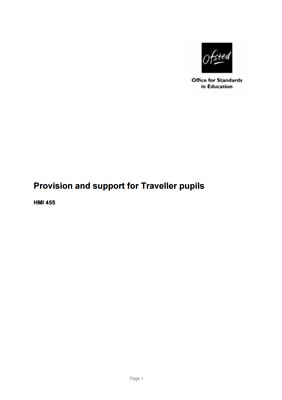
Provision and support for Traveller pupils, Ofsted, 2003
Publication type: Report | Author: Other | Themes: Report
This report provides a background to the provision and support for education to Gypsy and Traveller pupils.

Publication type: Report | Author: Other | Themes: Report
This report provides a background to the provision and support for education to Gypsy and Traveller pupils.
We use cookies to improve your experience on our site. By using our site, you consent to cookies.
Websites store cookies to enhance functionality and personalise your experience. You can manage your preferences, but blocking some cookies may impact site performance and services.
Essential cookies enable basic functions and are necessary for the proper function of the website.
Google reCAPTCHA helps protect websites from spam and abuse by verifying user interactions through challenges.
Statistics cookies collect information anonymously. This information helps us understand how visitors use our website.
Google Analytics is a powerful tool that tracks and analyzes website traffic for informed marketing decisions.
Service URL: policies.google.com (opens in a new window)
SourceBuster is used by WooCommerce for order attribution based on user source.